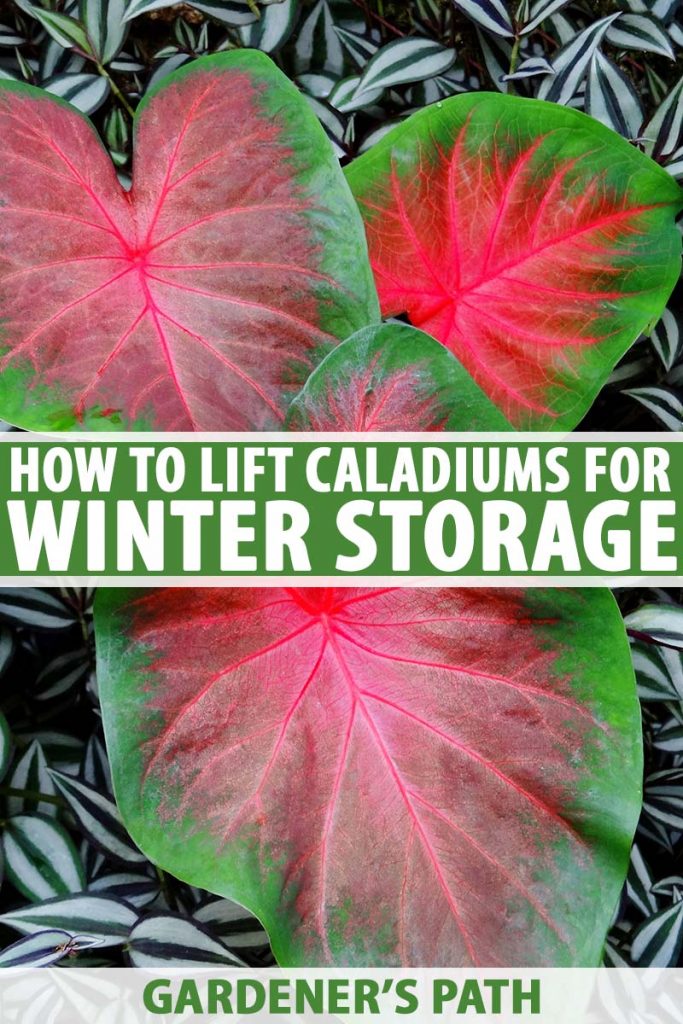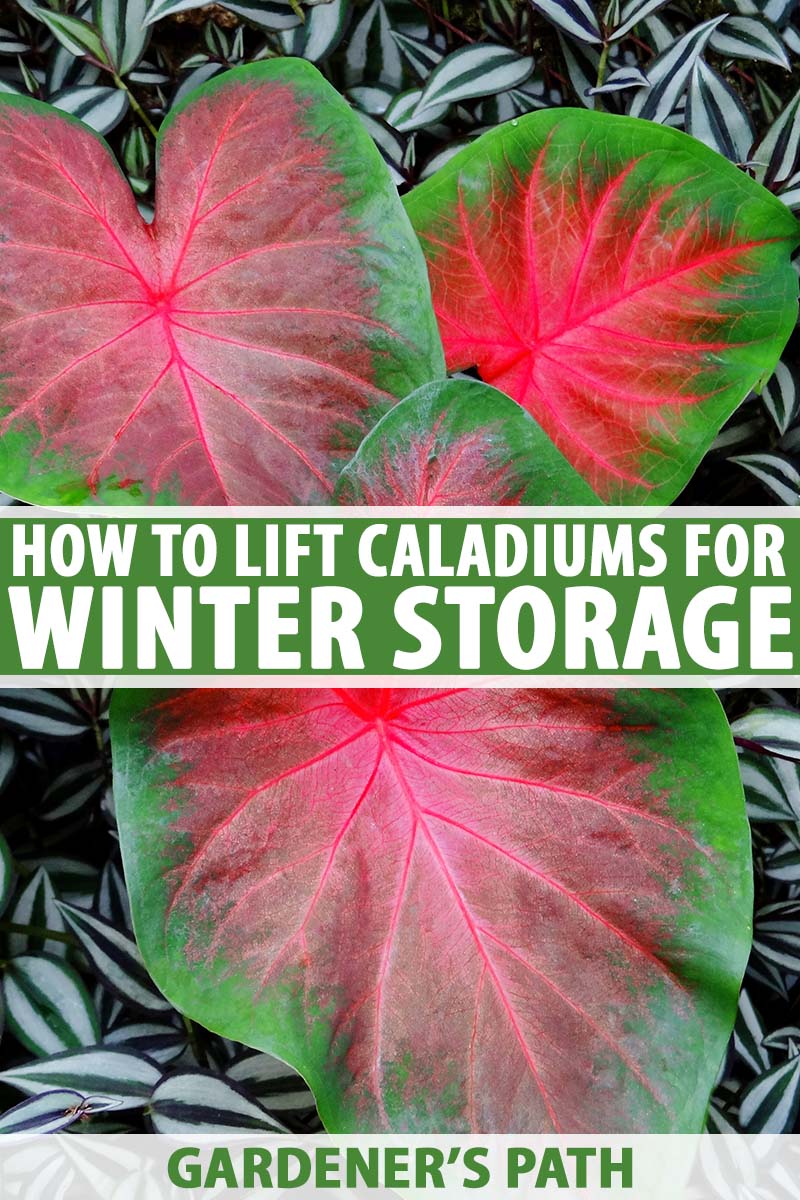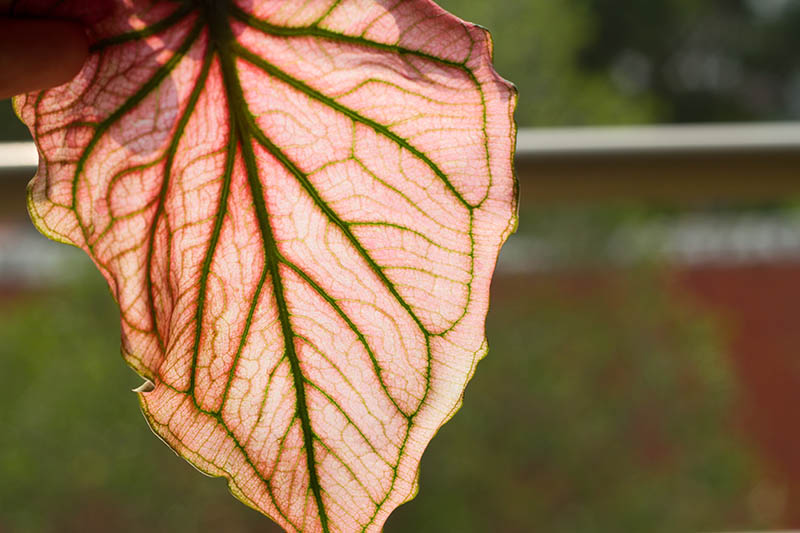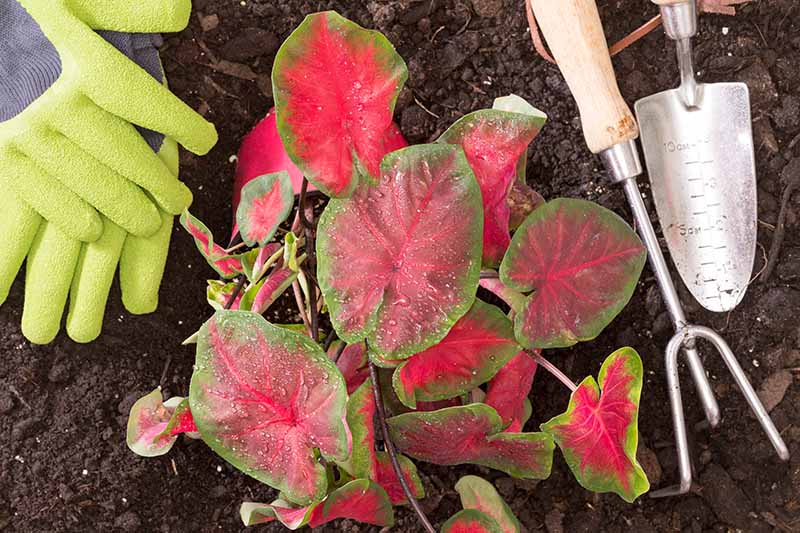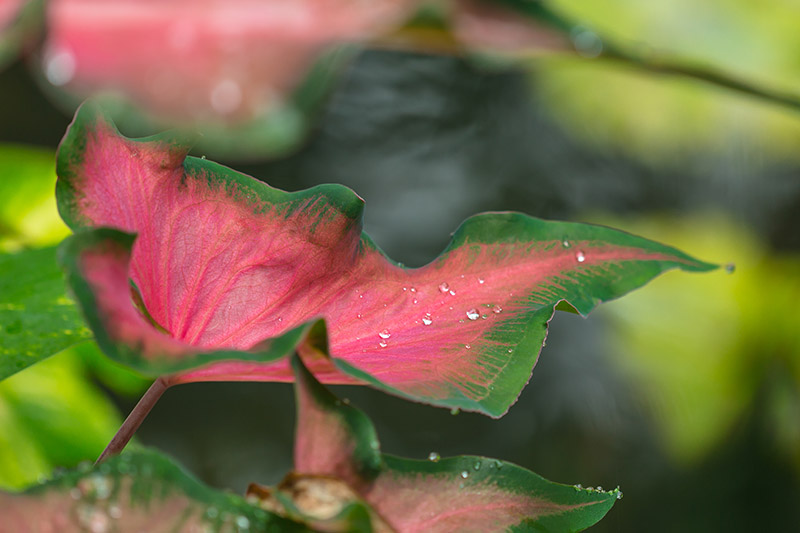In colder areas, where the ground freezes, they are often grown as annuals. They can be taken out of the ground in the fall, the corms stored during the winter months, and replanted the following spring. In addition, folks in regions that are warm and frost-free, but very rainy in winter, often dig up and store caladiums to prevent them from rotting in perpetually wet ground. We link to vendors to help you find relevant products. If you buy from one of our links, we may earn a commission. Here’s what I’ll cover:
When the Time Is Right
Caladiums grow best in soil temperatures of at least 70°F. Their showy leaves sprout in spring and flourish through the summer. In fall, they start to fade and wither, going dormant over the winter months.
In warm regions where the soil temperature remains above 60°F year-round, you may be able to leave your plants in the ground. However, as mentioned, if your winters are especially wet, poor soil drainage may cause them to rot in the ground before the next spring. In areas where the ground freezes, like my locale in the Northeast, you’ll want to take your plants out of the ground in fall, as the foliage starts to fade, when the soil temperature is around 60°F. You can use a soil thermometer to check the ground temperature, or use weather forecasts and plant behavior as your guides. When the daytime temperatures no longer climb out of the 70s, and nighttime temperatures drop to the 50s, and plants begin to droop and pale, it’s time to dig. Remember, these are tropical plants. They are likely to survive temperatures as low as the 40s, but one freeze, and they’ve had it. If you grow caladiums in containers instead of in the ground, you may bring your pots indoors when nighttime temperatures begin to dip below 60°F, where they may thrive as houseplants. They require a period of dormancy over the winter months, so hold off on watering once they stop growing and winter dormancy begins. Resume watering when you see signs of spring growth. You can learn more about growing caladiums indoors in this guide. (coming soon!)
How to Lift and Cure Caladium Corms
Caladiums grow in clusters of leafy petioles, or leafstalks that sprout from corms.
The roots are shallow, but you need to take care not to damage the corms when you dig them up. To Lift Plants: Use a garden claw or spade to loosen the soil six to eight inches wide around a cluster, and eight inches deep. Grasp the leafstalks together like a bouquet, and carefully lift the ball of earth that contains the roots and corms from the ground. To Cure Corms: Use a garden hose on a gentle setting to wash away all of the soil that is clinging to the corms and roots. Alternatively, you can lay the lifted plant on newspaper in a cool, dry place until they are dry enough to gently brush off the clinging soil. Inspect the corms and roots and cut off any dead, soft, or rotten spots. At this point, some people spray a sulfur-based fungicide, according to package instructions, on the corms to inhibit rotting during storage. Place in a warm, dry location out of direct sunlight, where they can dry. This may take a week or more.
Winter Storage
After a week or so of curing, the corms should be dry enough to place in storage.
You’ll know they’re ready when all parts feel dry and the remaining foliage is withered, brown, and easy to pull away from the corm. Drying times will vary. Don’t rush this stage, as corms that are not sufficiently dry are likely to rot during storage. To Store Corms: Remove all the foliage and trim off the roots so the corms are bare. Place the corms at least one inch apart on a bed of dry potting medium like vermiculite, sphagnum peat moss, or sand. At this point, some gardeners sprinkle powdered sulfur-based fungicide, according to package instructions, over the corms to inhibit spoilage over the winter. Cover them with two to three inches of the same potting medium. Store the containers in a cool, dry location out of direct sunlight, where they will not be disturbed, and temperatures don’t drop below 55 to 60°F. If you are storing your corms in a shed or other location where digging and nibbling rodents may be a problem, tuck screening over and around your containers. Keep the potting medium dry during winter storage.
Replanting
When all risk of frost has passed and the soil temperature is at least 70°F, you can plant your stored corms out in the garden. Alternatively, start them indoors in early to mid-spring for planting out in early summer. Place the corms bud side up, in a container filled with well-draining potting medium. Keep the soil moist but not waterlogged, and place it in a warm location (70°F) with indirect sunlight.
Plant, Lift, and Repeat
With ideal growing conditions, including part shade and organically-rich, well-draining soil with a temperature of 70°F or above, caladiums do very well. And now that you know how to lift, cure, and store them in climates not conducive to wintering over, you can multiply your initial investment into years of colorful garden attractions.
Over time, you may find that your plants have sparse leaves and are not as vigorous as they once were. This is not unusual; it’s just the nature of the plant. At that point, likely five or more years down the road, you may want to stop lifting and storing, and purchase new favorites to love. Do you grow caladiums? What are your favorite color combinations? What plants share the garden with these tropical lovelies? Let us know in the comments section below. And feel free to share a picture! And if you want to add more foliage plants to your garden, check out these guides next:
What’s Not an Asparagus and Not a Fern? Asparagus Fern! Growing Hostas: A Favorite Shade Loving Perennial Dusty Miller: A Plant That Really Shines
© Ask the Experts, LLC. ALL RIGHTS RESERVED. See our TOS for more details. Uncredited photos: Shutterstock.
